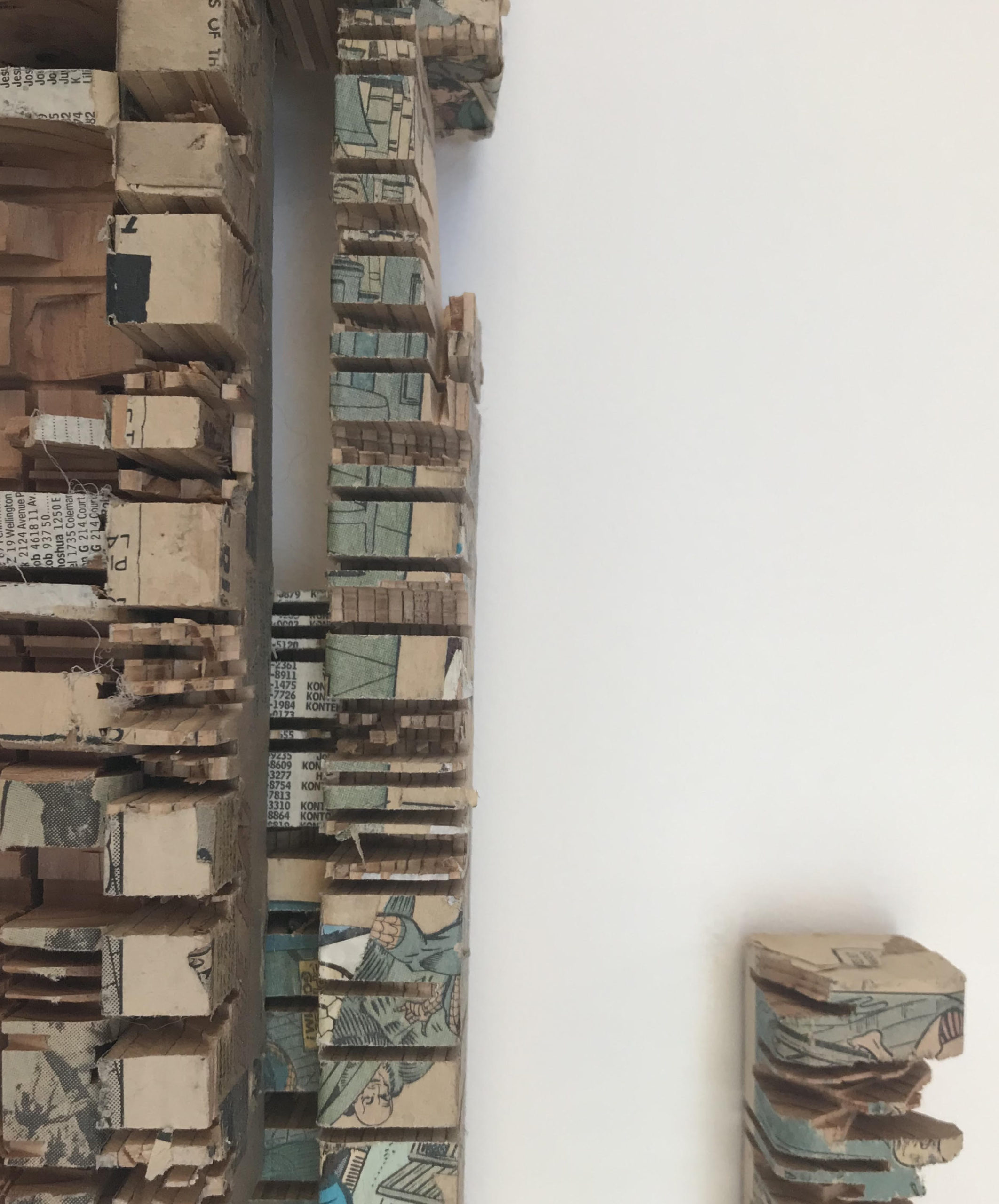
Brooklyn-based artist Leonardo Drew produces art from everyday materials. His installations relate directly to the moment and location in which they are placed — a response to events, the architecture or natural environment. He sees our bodies as complex receptors and believes our experiences shape and mold us in profound ways. Sometimes the impact goes unnoticed in simple encounters such as seeing “a boulder that is unmoved by the wind.” He told a group of students in London, “If you allow your antennas to reach out, you’ll find what it is you need for this part of your journey.” The image shown here is a piece of a large installation entitled Number 184T commissioned by the Crystal Bridges Museum in 2017.
Drew’s powerful work has been shown throughout the world and is included in the most significant contemporary art collections. He was deeply impacted by his childhood in Tallahassee, Florida, where he would make things from discarded materials. “I remember all of it, the seagulls, the summer smells, the underground fires that could not be put out…” This seeming need to make has resulted in an unusual and productive devotion to studio life. Although many of Drew’s sculptures appear to be made of found objects, they are not. His massive installations are constructed of smaller pieces and shards that he transforms in his studio. He uses natural materials and transforms them through oxidation, burning and decay, reinforcing the natural cycle of “life, death and regeneration.”
